Loved for its delicious cuisine, marvellous architecture and cutting-edge culture, Brussels is a multisensory thrill.
There are upwards of 75 museums in Belgium’s capital, and what’s great is how many are within a brief walk or ride of each other.
The heart of the city owes its appearance to a program of demolition and reconstruction that began in the middle of 19th century under King Leopold I and continued with his successor Leopold II.
One name that will keep coming up is Victor Horta, one of a contingent of Art Nouveau architects who breathed real flair into Brussels’ streetscapes at the turn of the 20th century.
Brussels is also the de facto capital of the European Union, and has attractions infused with the optimism and sense of shared purpose that comes with that status.
Here are the best things to do in Brussels.
1. Grand-Place
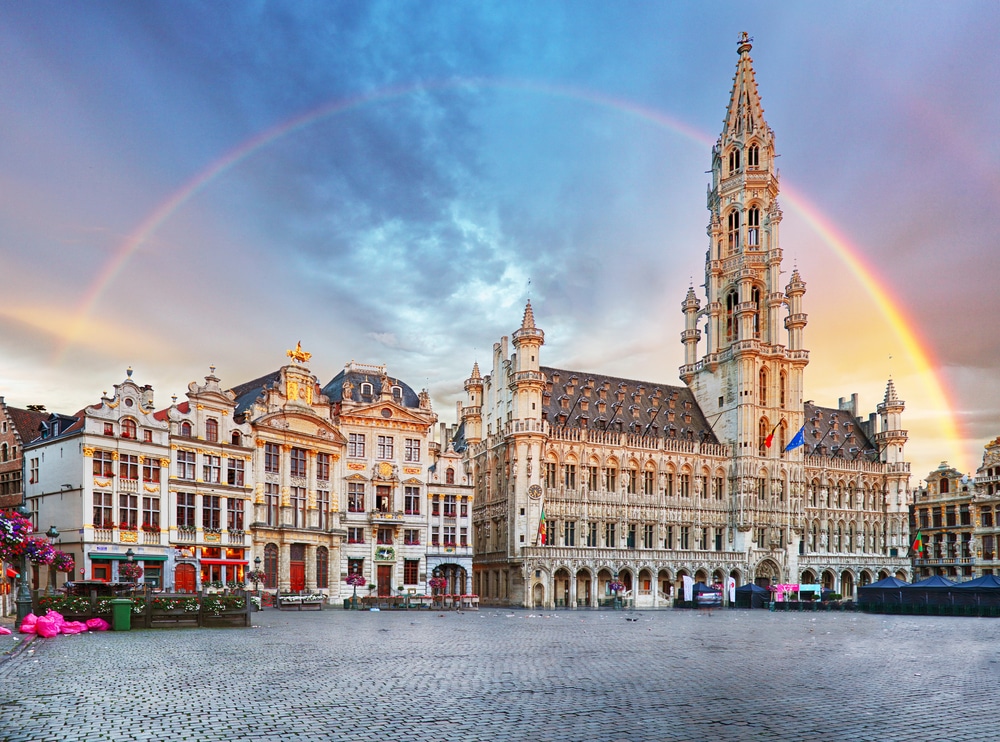 Source: TTstudio / shutterstock
Source: TTstudio / shutterstockIs there a finer city square in the world? With its exuberant facades and towering gables, Brussels’ central square has something to steal your gaze in every direction.
Contributing the most to that splendour is the Hôtel de Ville, a masterwork of Brabantine Gothic architecture.
The facade has extremely detailed stonework, from crocketed pinnacles to blind arches and depictions of the Dukes and Duchesses of Brabant.
It was all begun at the start of the 15th century, and then extended, reworked and realigned over time, all within a confined space.
This explains the off-kilter location of the tower, soaring to 96 metres and featuring the most delicate openwork.
Playing a supporting role to the Hôtel de Ville are structures like the neo-Gothic King’s House opposite, and the terraces of guild houses with theatrical Baroque facades.
These are mostly from the late-17th century following the bombardment of 1695.
2. Royal Museums of Fine Arts of Belgium
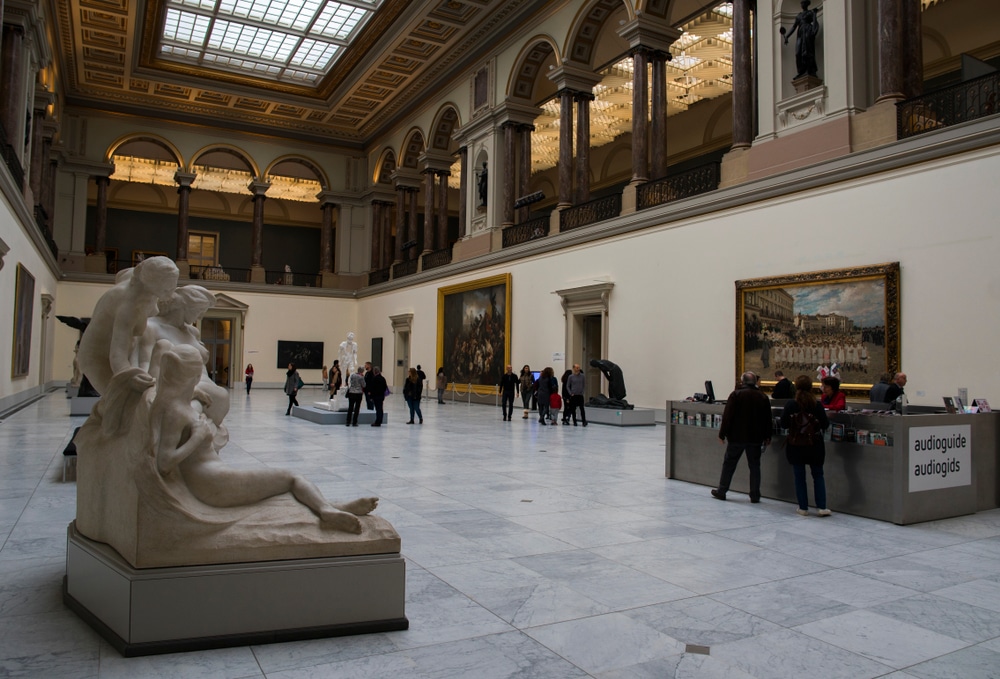 Source: Guido Marsman / shutterstock
Source: Guido Marsman / shutterstockThe richest and largest collection of visual arts in the country is in the hands of this institution, which maintains six museums in the capital.
The original museum was founded in 1845, but the origins of the collections can be traced back to the efforts of one Guillaume Bosschaert to recover works of art looted by French Revolutionaries at the end of the 18th century.
The must-see is the Oldmasters Museum, on the Coudenberg, with a phenomenal wealth of painting and sculpture from the 1400s to the 1700s.
Just some of the masters in the collection are Rubens, Lucas Cranach, Hieronymus Bosch, van Dyck and Jacob Jordaens.
Close by and under the same umbrella is the Magritte Museum, which we’ll cover a little later.
Website: https://www.fine-arts-museum.be/
3. Museum of Natural Sciences
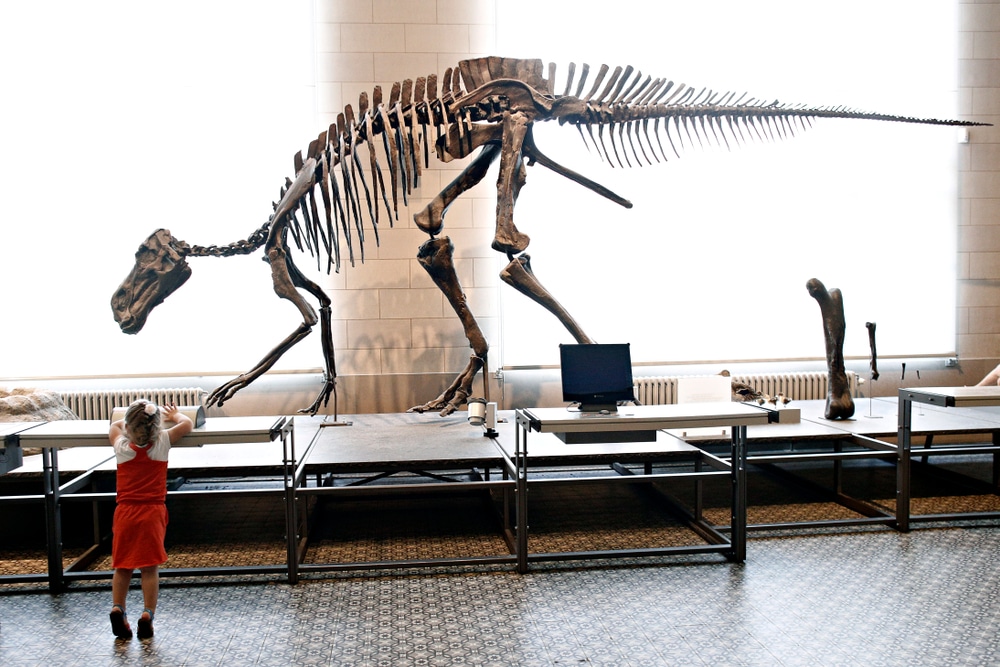 Source: Alexandros Michailidis / shutterstock
Source: Alexandros Michailidis / shutterstockThe first thing to tell you about one of Europe’s great natural history museums is that it contains the largest museum hall for dinosaurs in the world.
The centre of attention here are the 30 almost completely intact skeletons of Iguanodons discovered at a coal mine in Hainault in 1878. After that you can indulge your interest in any number of fields, from evolution to Ice Age mammals, whales (with a complete skeleton of a blue whale), tropical marine species, minerals and insects, the gallery for which has an extensive vivarium.
One item that conjures fascination is the Ishango Bone, the fibula of a baboon with rows of notches and a sharp piece of quartz on one end.
Dating back more than 20,0000 years, this artefact was discovered in today’s Democratic Republic of Congo and is believed by many to have been a counting tool.
The Museum of Natural Sciences also has a program of smart and interactive temporary exhibitions.
Website: https://www.naturalsciences.be/
4. St Michael and St Gudula Cathedral
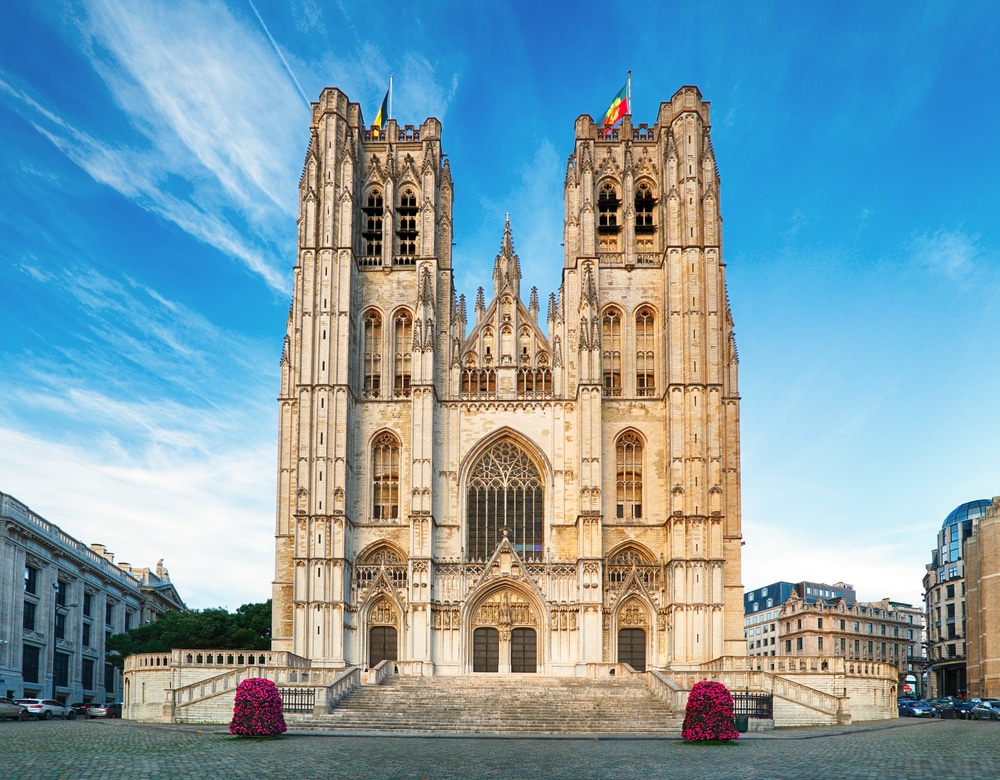 Source: TTstudio / shutterstock
Source: TTstudio / shutterstockThe city’s stirring Roman Catholic cathedral is dedicated to the patron saints of Brussels and is held as an outstanding piece of Brabantine Gothic architecture.
Work began in the 11th century, and the building reached its current appearance around 1519. The Late Gothic facade and towers are all from the second half of the 15th century and resemble the cathedrals of Northern France.
The exception is the lack of a circular rose window, replaced by a huge pointed window with the intricate but sober stonework of Brabantine Gothic architecture.
Inside, the nave is also Brabantine, at once striking and understated, lined with powerful cylindrical columns with foliate capitals.
In the choir are the mausoleums for the Dukes of Brabant, as well as Archduke Ernest of Austria (1553-1595), son of Emperor Maximilian II.
In a chapel just to the left of the choir are the cathedral’s treasures, including an Anglo-Saxon cross-reliquary from the start of the 11th century.
Website: https://cathedralisbruxellensis.be/
5. Parc du Cinquantenaire
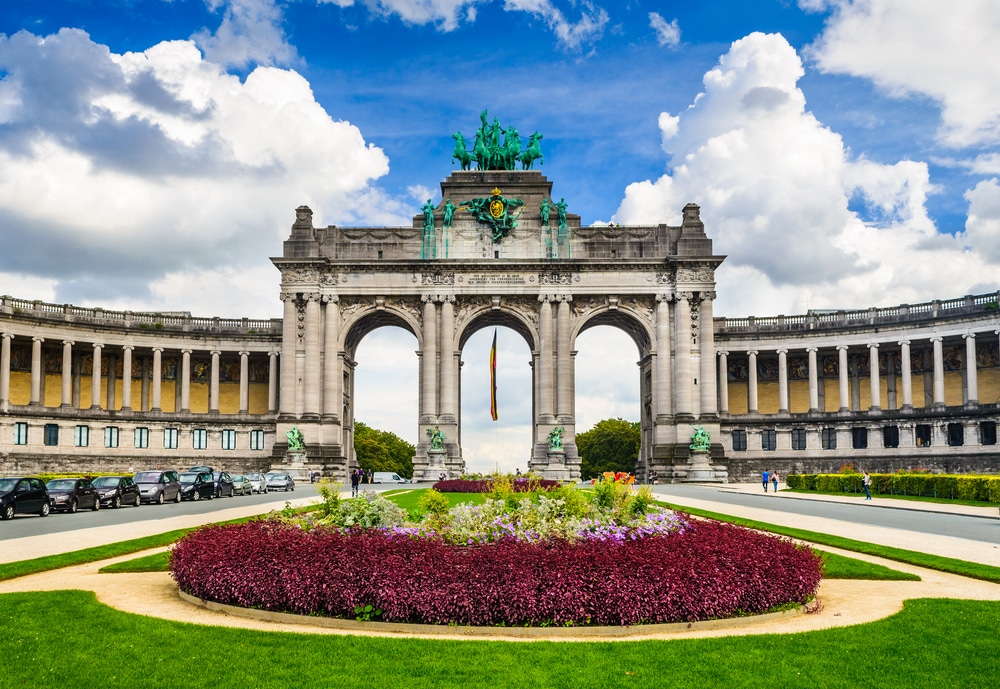 Source: cge2010 / shutterstock
Source: cge2010 / shutterstockTo mark 50 years of Belgian independence the government commissioned a 30-hectare park, dominated by the U-shaped Arc du Cinquantenaire exhibition complex, designed by Gédéon Bordiau (1832-1904). The park, ready for the 1880 National Exhibition, has a pentagonal plan to mimic the shape of the city’s inner and outer rings.
Entering from the south-east via the sweeping esplanade you’ll be met by the Triumphal Arch, which links the North and South Halls of the exhibition complex, as well as the northern and southern Bordiau wings, running parallel to the esplanade.
The effect is almost overwhelming grandeur.
We’ll talk about the museums in the complex later, but you can scale the triumphal arch’s quadriga for one of the best views of the city.
Seek out Victor Horta’s Temple of Human Passions (1896), showing the young architect’s first steps towards Art Nouveau.
6. Atomium
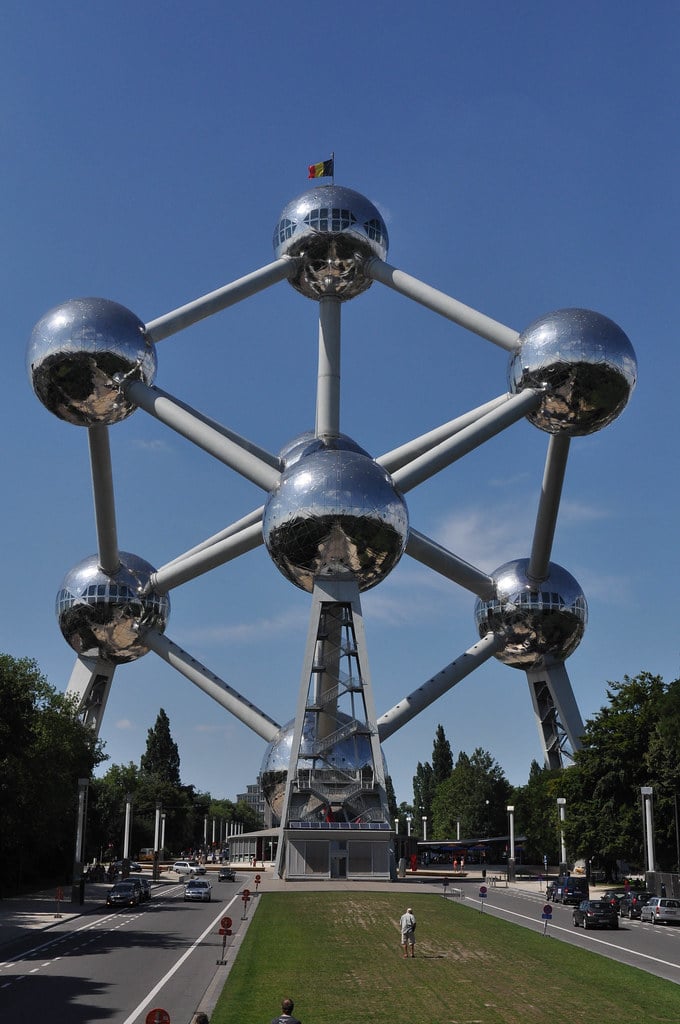 Source: marcoverch / Flickr | CC BY
Source: marcoverch / Flickr | CC BYIt’s funny to think now that the flagship for the 1958 Brussels World’s Fair wasn’t supposed to outlive the event.
As it is, the Atomium is the most visited attraction in the city, as well as an abiding landmark.
The site of Expo ’58 is on the Heysel Plateau, several kilometres north of the centre of the city.
The structure rises to 102 metres and through a matrix of tubes and six stainless steel spheres represents the unit cell of an α-iron (ferrite) crystal magnified 165 billion times.
As well as being a mind-boggling piece of design, especially for the day, Atomium offers knockout views of Belgium and its countryside, as well as temporary exhibitions, a restaurant, an events space and interesting info on the construction of this modern wonder.
Website: https://atomium.be/
7. Mont des Arts
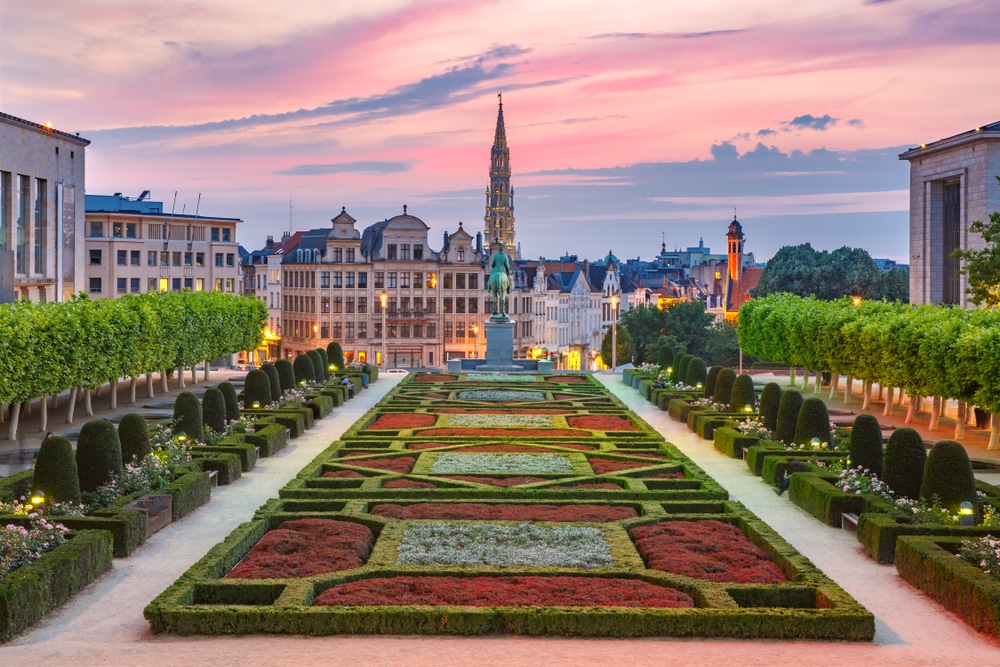 Source: kavalenkava / shutterstock
Source: kavalenkava / shutterstockYou’ll have a view to behold from this garden and urban ensemble bridging the traditional upper class upper quarter at Coudenberg with the working class areas to the north.
At the end of the 19th century Leopold II had a grand vision of turning the area into a leading quarter for the arts.
That plan stalled, but the space had already been cleared of buildings and a popular garden was planted in time for the Brussels International Exposition of 1910. This eventually made way for the stark but engaging Modernist architecture of the Royal Library of Belgium and the swish new Square – Brussels Meeting Centre.
Between these structures is a geometric garden planted in the 50s with neat boxwood hedges and rows of precisely clipped plane trees.
Climb the steps behind and there’s a clear line of sight across to the Hôtel de Ville, and from the right angle on a clear day you can see as far as the Atomium.
Website: https://www.kunstberg.com/
8. Manneken-Pis
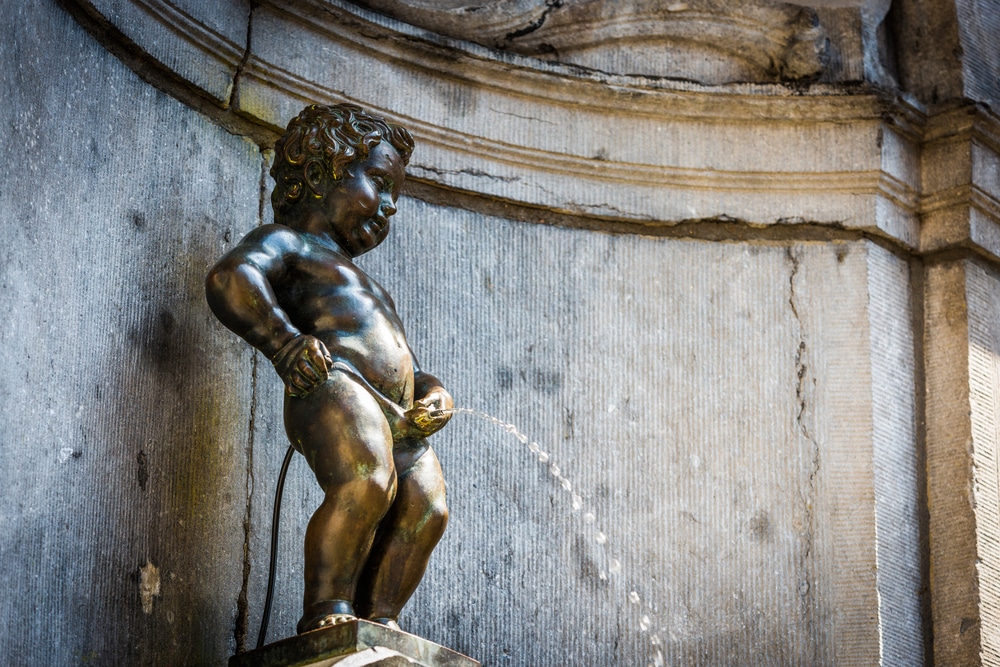 Source: Anibal Trejo / shutterstock
Source: Anibal Trejo / shutterstockA mascot for Brussels just a few minutes on foot from Grand-Place, this cheeky little guy is one of the things many people picture when they think of Belgium’s capital.
The image of a naked boy leaning back and peeing into the basin has come to sum up Brussels’ sense of humour, known as “zwanze”, and its irreverent spirit.
The original was cast by one Jérôme Duquesnoy the Elder and installed around 1619. In its time the piece has been kidnapped, by the English and French, and has worn so many different outfits that its wardrobe now runs to more than 950 items.
The current Manneken-Pis is a replica from 1965, and the original is on show at the Brussels City Museum.
9. Galeries Royales Saint-Hubert
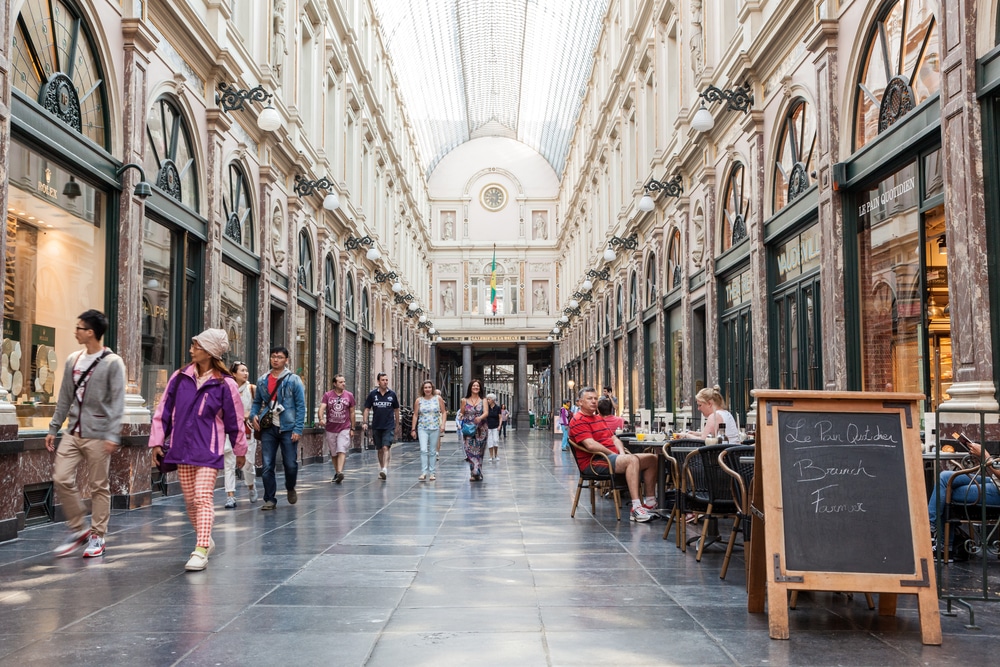 Source: Philip Lange / shutterstock
Source: Philip Lange / shutterstockA precursor to the glazed shopping galleries that sprouted around Europe from the mid-19th century, the sublime Galeries Royales Saint-Hubert were inaugurated in 1847. The young architect Jean-Pierre Cluysenaar was in charge of the project, the goal of which was to remove a tangle of dirty and intimidating alleys and replace them with something more to the bourgeoisie’s liking.
With twin Italianate facades of pilasters and arches below a glass barrel vault with intricate framework, the arcades are more than 200 metres long.
The project was an instant success, and the spaces were quickly occupied by fashion emporia, cafes and cultural spaces.
The Taverne du Passage (then known as Café des Arts) was a hotspot for writers and artists, and frequented by French political refugees and expats like Victor Hugo and Alexandre Dumas.
Website: https://www.grsh.be/
10. Musical Instruments Museum
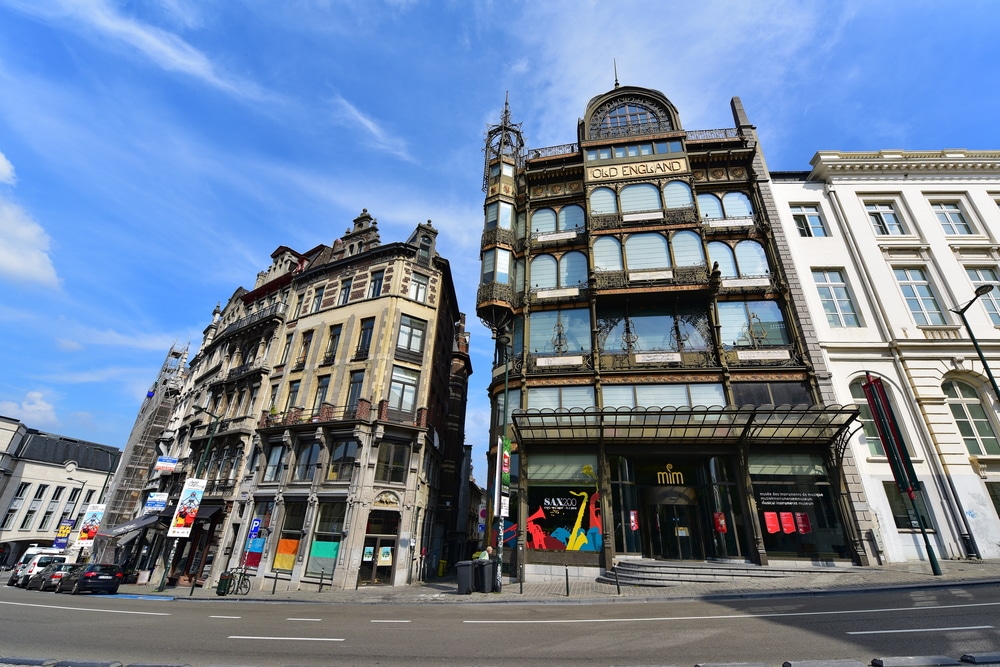 Source: Jordan Tan / shutterstock
Source: Jordan Tan / shutterstockThis museum’s astonishing collection of musical instruments exceeds 9,000 pieces, many utterly original, and only an eight of which can be shown at one time.
The collection was first assembled in 1877 by the Royal Conservatory of Brussels to help teach students about the history of music.
It was later bolstered by clever acquisitions and donations, like a gift of a hundred Indian instruments to King Leopold II by a Bengali musicologist.
The museum is set in two adjacent buildings, one being the exquisite Art Nouveau Old England department store (1899), designed by Paul Saintenoy.
As the home of Adolphe Sax, Belgium has a special place in the history of instrument-making, and you can see some of his inventions and learn about Sax’s story.
There are also details about the thriving recorder-making industry in Brussels in the Renaissance and Baroque.
An electronic guide will help bring each of the exhibits to life.
Website: http://www.mim.be/
11. Magritte Museum
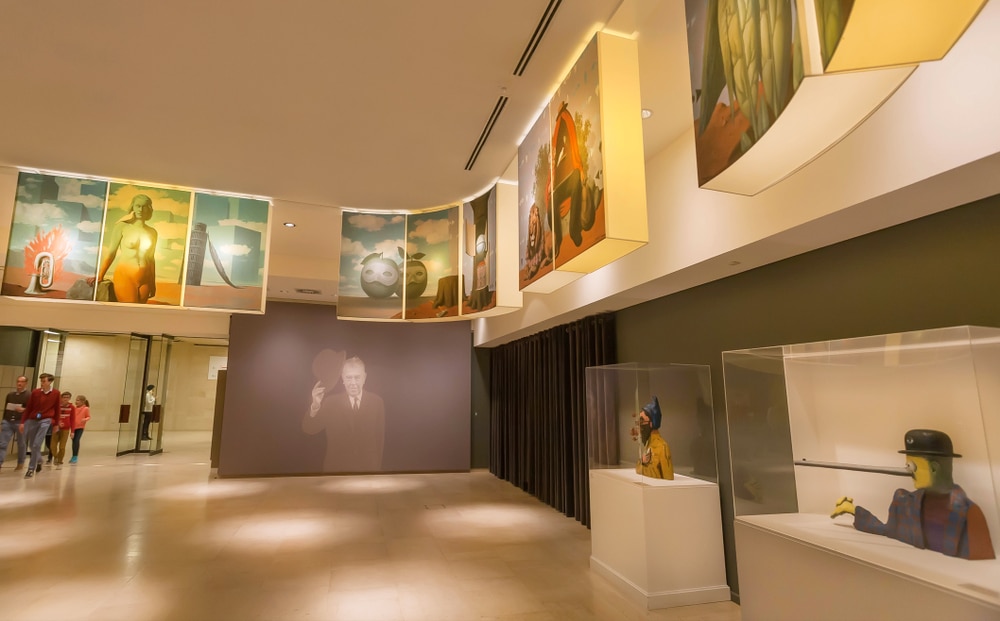 Source: Radiokafka / shutterstock
Source: Radiokafka / shutterstockThe Neoclassical Hôtel Altenloh is one of an ensemble of Ancien Régime buildings framing Place Royale, and has been used as a museum since the 1960s.
In 2009 it became the home of a gallery centred on the great Belgian Surrealist, René Magritte (1898-1967). The multidisciplinary collection runs to more than 200 paintings, sculptures and drawings, the largest holding of Magritte’s work in the world.
Much of this belonged to Magritte’s widow, Georgette and his most prolific collector, Irène Hamoir.
As well as the famed Empire of Light, you’ll encounter gouaches, posters, painted objects, photography and sheet music arranged over three floors for a chronological and thematic journey through Magritte’s career.
Website: https://www.musee-magritte-museum.be/
12. Belgian Comic Strip Center
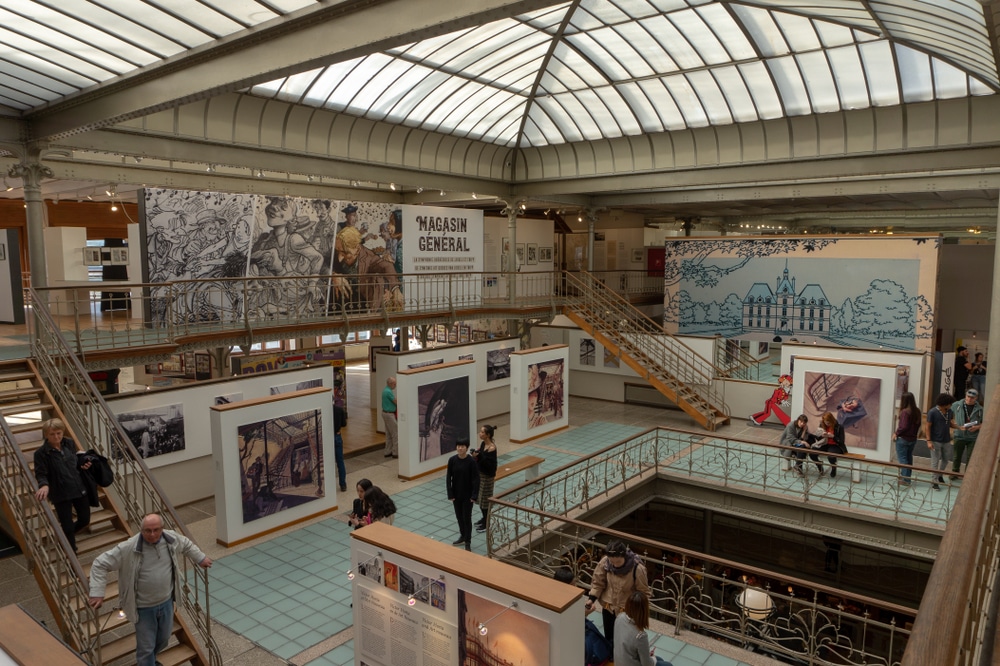 Source: Bibiana Castagna / shutterstock
Source: Bibiana Castagna / shutterstockIn the 1980s an exquisite former department store designed by the art Nouveau master Victor Horta was turned into a showcase for one of Belgium’s big cultural exports, comics.
Across four floors there’s a library, auditorium and rooms devoted to animation and the building’s designer Victor Horta.
The bulk of the permanent exhibition is on the second floor, leading you on a journey that begins with Tintin creator Hergé and ends with Peyo, the man responsible for the Smurfs.
Each of the artists along the way has a room shining a light on their work in a playful and creative way.
Website: https://www.comicscenter.net/
13. Sablon
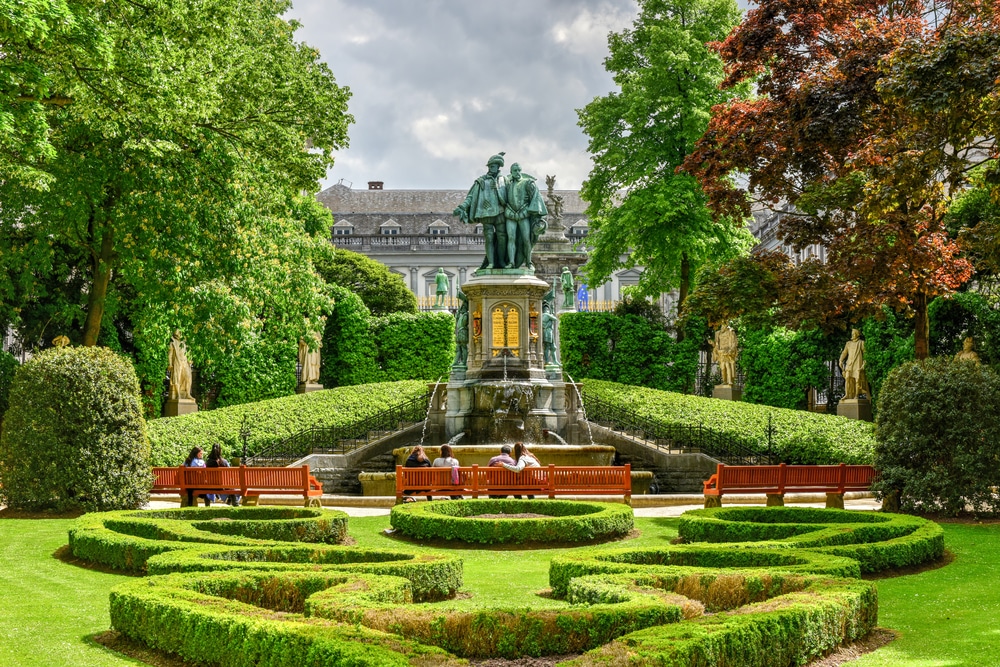 Source: Felix Lipov / shutterstock
Source: Felix Lipov / shutterstockStay on Rue de la Régence from the Magritte Museum and you’ll head into this picturesque hilltop neighbourhood in the city’s upper town.
In the Middle Ages Sablon was a sandy clay mound outside the city walls used as an exercise ground by the Crossbowmen’s Guild.
They built the chapel that later became the Église Notre-Dame du Sablon, a delightful 15th-century Brabantine Gothic church with profuse interior decoration.
Go in to view the 17th-century Baroque statues of the Apostles, the Baroque pulpit, the choir’s 15th-century polychrome murals and the marvellous triptych by Flemish painter Michiel Coxie (1499-1592). Outside are the twin Petit and Grand Sablon squares, fronted by restaurants, boutiques, pastry shops and antiques shops.
There’s an antiques and book market here on weekends.
14. Art & History Museum
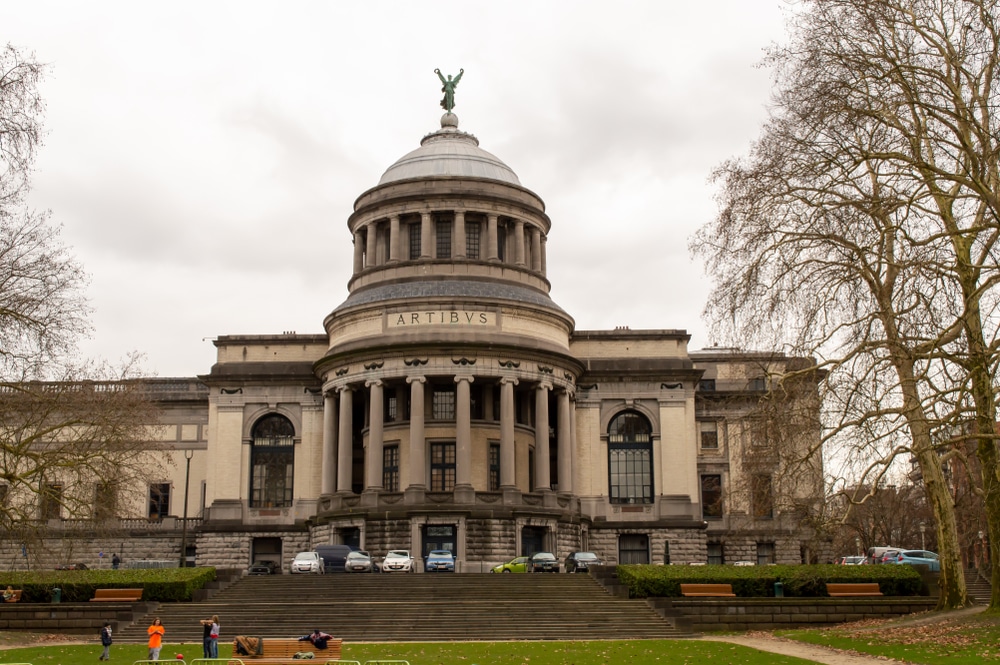 Source: Vitalii Biliak / shutterstock
Source: Vitalii Biliak / shutterstockPreviously simply called the Cinquantenaire Museum, one of the largest museums in Europe occupies the North Hall of that solemn complex in the Parc du Cinquantenaire.
In the holdings are archaeological finds from prehistory to the 8th century, European decorative arts from the Middle Ages to the 20th century, art from ancient civilisations around Europe and treasures from non-European civilisations.
It’s the kind of place where you can delve into a period or topic and completely forget about the world outside.
You’ll be under the spell of Art Nouveau and Art Deco objets d’art, tapestries, altarpieces, Mesoamerican figurines, Islamic art, Roman mosaics, a huge Egyptian collection and funerary items from a Merovingian tomb.
Website: https://www.artandhistory.museum/
15. Parlamentarium
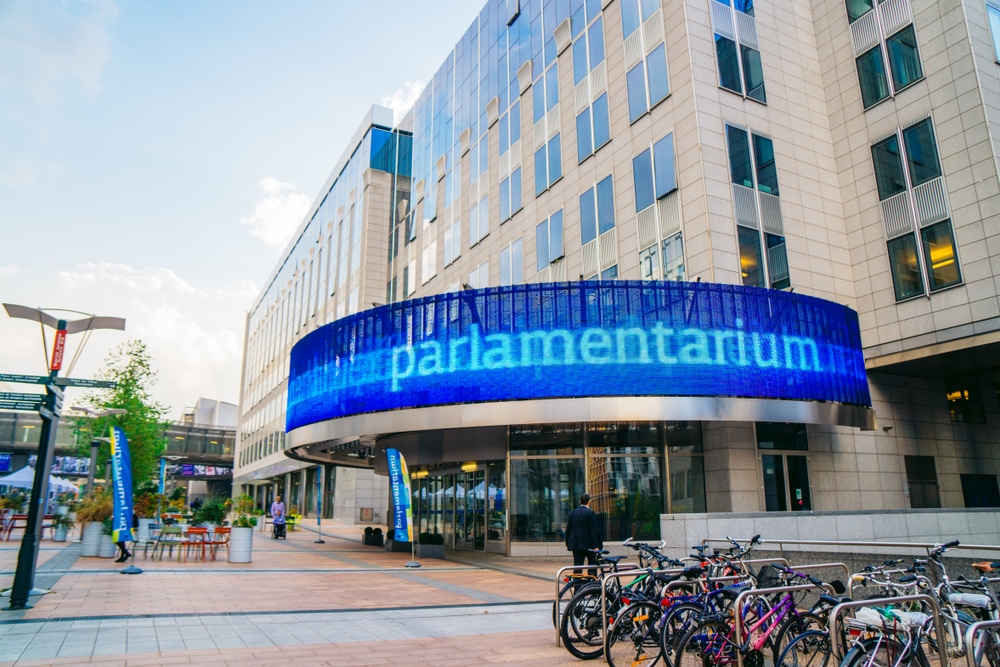 Source: Hieu VO / shutterstock
Source: Hieu VO / shutterstockIf you’re intrigued by how the European Parliament functions, your questions will be answered at the visitor centre at the Espace Léopold complex.
At the Parlamentarium you’ll be handed a “personal multimedia guide” and can explore a host of topics, like the road that led to European cooperation, the intricacies of the European Parliament and how its members are responding to a changing world.
You’ll use your multimedia guide to activate each station, combining crisp visuals with audio.
Some of the more memorable features are a huge interactive floor map and a 360° cinema.
This attraction is free of charge and available in all 24 of the EU’s languages.
Website: https://europarl.europa.eu/visiting/en/visitor-offer/brussels/parlamentarium
16. Brussels Park
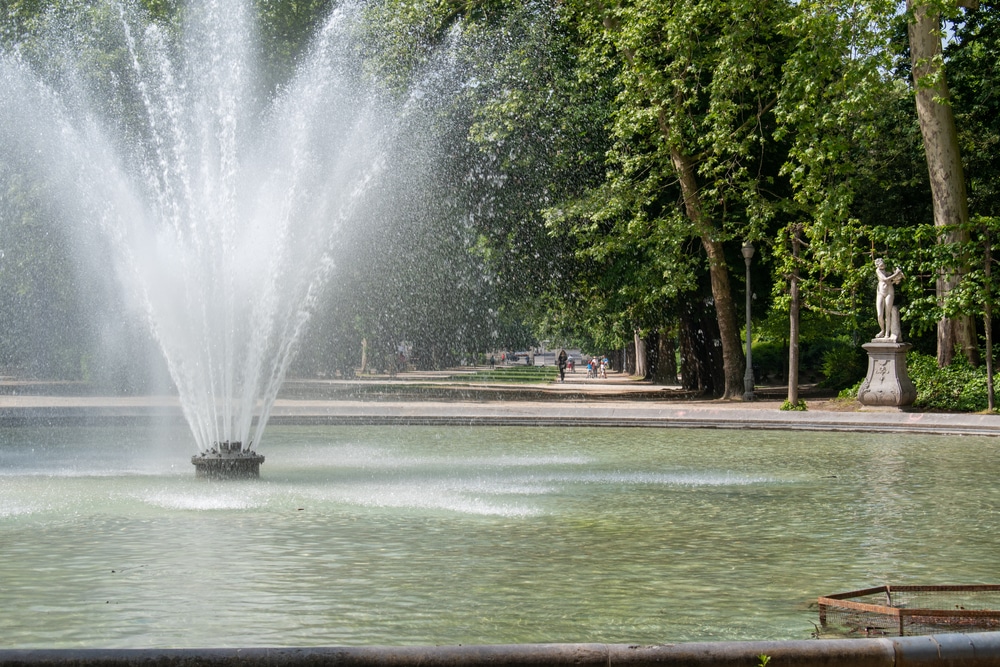 Source: MMaxime / shutterstock
Source: MMaxime / shutterstockThe city’s first public park is also the largest, at just over 13 acres and wrapped in a monumental fence and a double row of lime trees.
Brussels Park has a rectangular plan and is on the former grounds of the Dukes of Brabant’s Palace of Coudenberg, the excavated foundations of which can be explored via the BELvue Museum.
Although the park was refurbished in the 2000s, the symmetrical design, with arrow-straight avenues and symmetrical lawns is 18th-century and by Austrian landscape architect Joachim Zinner.
Walking these alleys you’ll happen upon sculptures, fountains and a bandstand raised in 1841. There are also some lovely old performance venues backing onto the park, like the Vauxhall (1781) and the Théâtre Royal du Parc (1782).
17. Royal Palace of Brussels
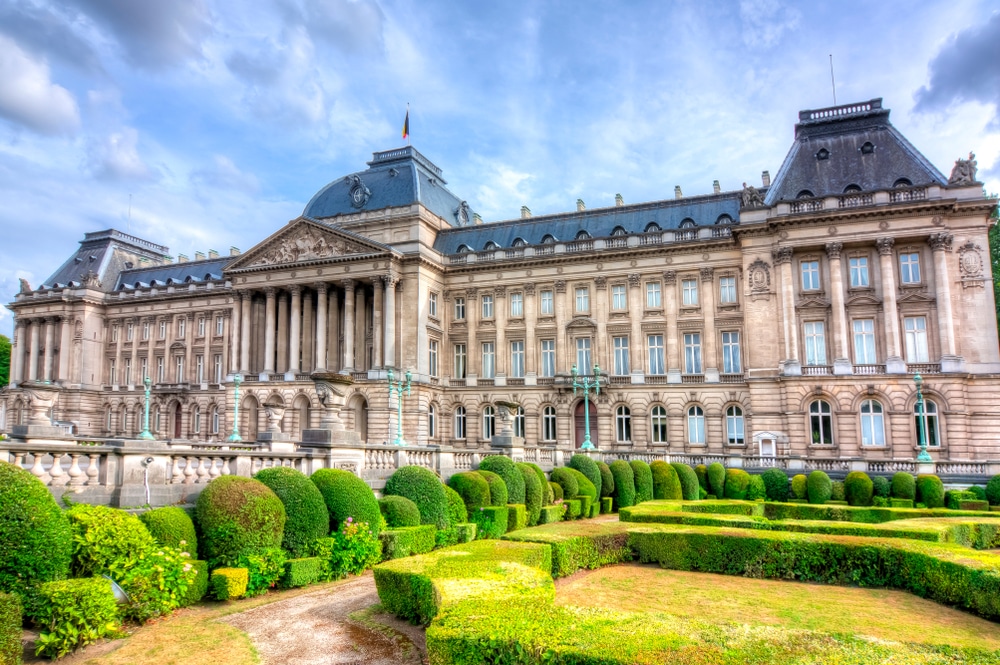 Source: Mistervlad / shutterstock
Source: Mistervlad / shutterstockPartially on the old grounds of the Palace of Coudenberg stands today’s royal palace, the symbol for Belgium’s constitutional monarchy.
This is the residence and workplace of Philippe of Belgium, and as well as royal apartments and offices, the building has opulent reception rooms for ceremonies and events.
With a facade 50% longer than Buckingham Palace, construction was started in 1783, while the current exterior is from a facelift in the Louis XVI style under King Leopold II in the early 20th century.
As is tradition, the Royal Palace of Brussels opens its doors to the public for a brief window each year, from just after Belgian National Day on 21 July until September.
At this time Philippe and Queen Mathilde are away on holiday, and you can take yourself on a free self-guided tour through a series of exquisitely decorated rooms brimming with marble, gold leaf, period furniture and historic fittings.
Each year the Throne Room is installed with display cases of royal memorabilia, set off by the soaring ceilings festooned with radiant chandeliers.
Website: https://www.brussels.be/
18. Mini-Europe
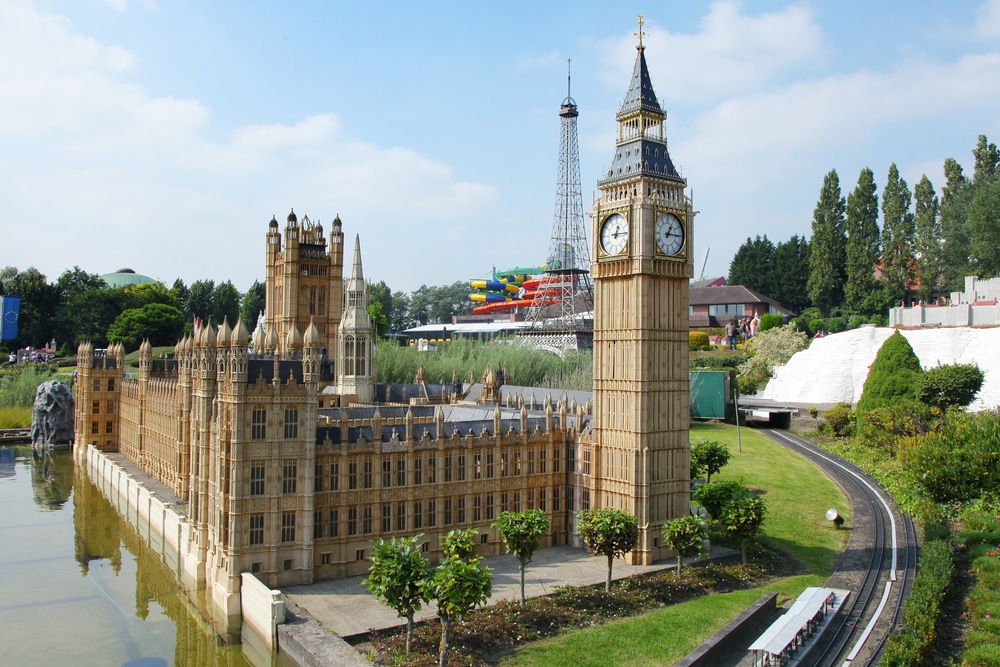 Source: Lisa A / shutterstock
Source: Lisa A / shutterstockAt the base of the Atomium is a family-friendly ode to Europe in the form of a miniature park.
Instead of using only static models, Mini-Europe is full of life, buzzing with TGV trains, cable cars, Venetia gondolas, mills and even an erupting Vesuvius.
You’ll on a whirlwind tour of the continent, seeing highly detailed models of famous landmarks on a 1:25 scale.
For a snapshot you’ve got the Acropolis, the Eiffel Tower, the Prague Orloj, the Brandenburg Gate, the Trevi Fountain and the Belém Tower.
These sights are all embedded in charming landscaping, with dwarf trees and bonsais.
The Spirit of Europe here is a full-sized multimedia attraction, reworked in 2019, outlining just what the European Union does for its 446 million inhabitants.
Website: https://www.minieurope.com/
19. Train World
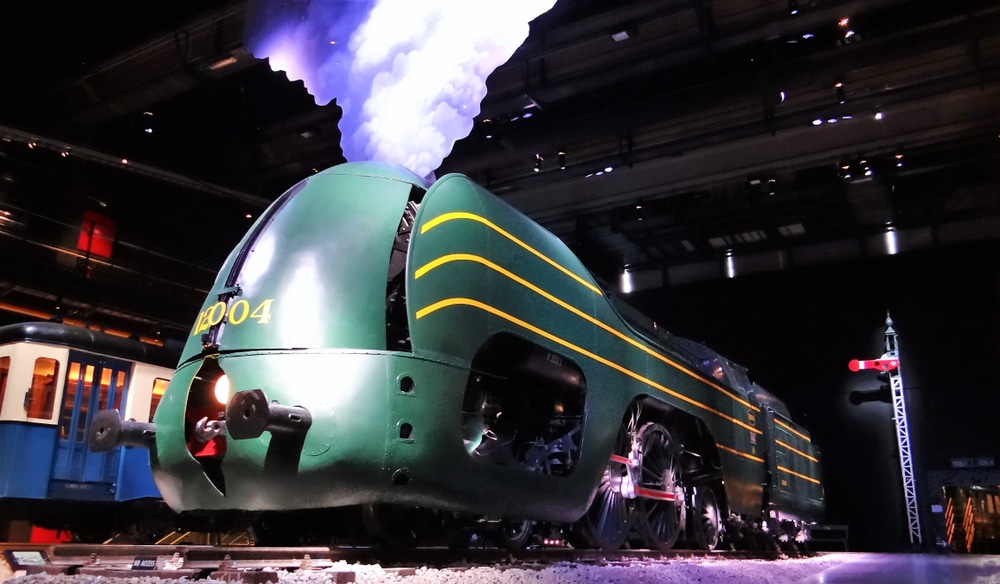 Source: Bjorn Keith / shutterstock
Source: Bjorn Keith / shutterstockContinental Europe’s oldest preserved locomotive is one of a big line-up of historic engines at this museum that opened at Schaerbeek railway station in 2015. The tank locomotive in question is the Pays de Waes, built by Belgian engineer Gustave De Ridder 1844 and hitting a top speed of 60km/h the year it was constructed.
Brussels is a logical spot for a prestigious railway museum, as the capital of the country with the oldest rail network on the continent, and there’s much more to see at Train World.
The collection tracks the development of rail travel in Belgium, with 22 locomotives, as well as carriages and infrastructure including a preserved 19th-century bridge.
Look out for the record-breaking Type 12 steam locomotive from the 1930s, the two opulent royal cars, the high-speed Trans Europe Express car and the travelling post office vehicle.
Website: http://www.trainworld.be/
20. Brussels City Museum
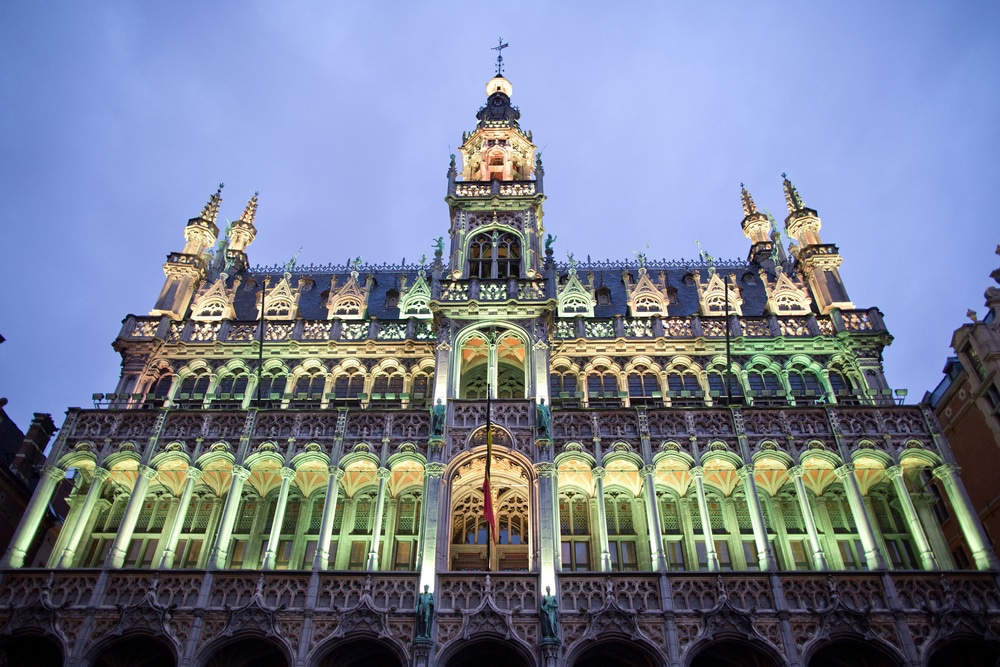 Source: CRM / shutterstock
Source: CRM / shutterstockWhere better than Grand-Place for the inside story on the city’s history and folklore? The Brussels City Museum is opposite the Town Hall in the Neo-Gothic Maison du Roi (King’s House), which has a highly intricate facade of loggias, tracery and trefoil arches.
The current building is 19th-century, but replaced an imposing 15th-century structure ordered by the Duke of Brabant on the site of the old Medieval bread market.
But as well as setting foot inside a beautiful monument, you’ll get to pore over more than 7,000 exhibits recounting the story of Brussels.
One is the original 17th-century Manneken Pis statue, but there are also dioramas of early Brussels, architectural fragments, facade statues, maps, scale models, paintings, altarpieces, porcelain, plans and pieces of porcelain and earthenware.
Website: https://www.brusselscitymuseum.brussels/
21. Horta Museum
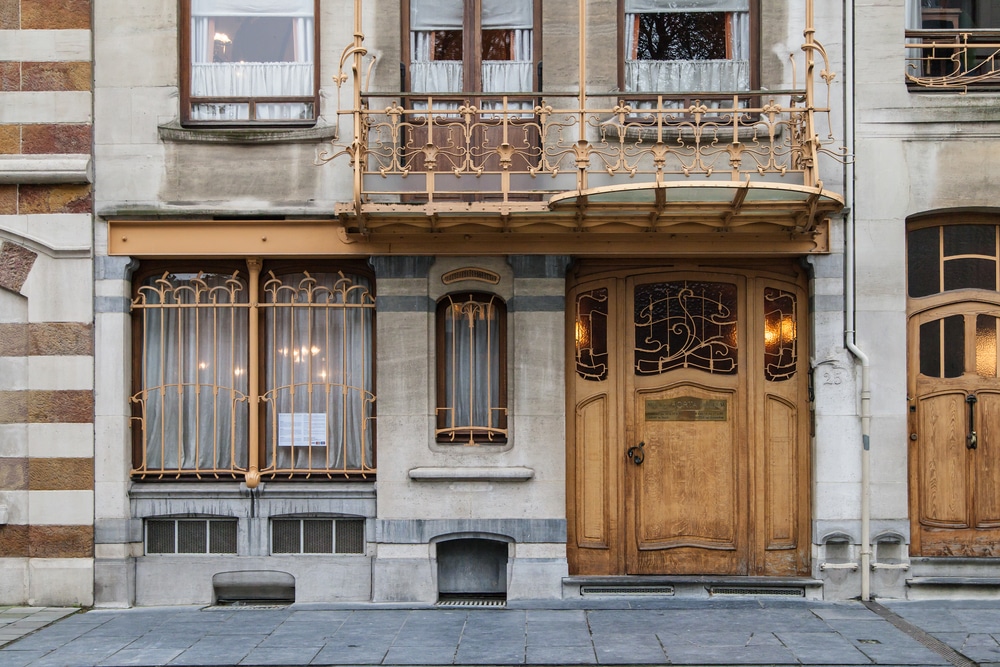 Source: Santi Rodriguez / shutterstock
Source: Santi Rodriguez / shutterstockAt this museum in the southern Saint-Gilles municipality you can enter the UNESCO-listed private home and studio of Art Nouveau architect Victor Horta (1861-1947). The two buildings took shape between 1898 and 1901 and epitomise Art Nouveau at the peak of the movement.
Horta lived and worked here from 1901 to 1919 and almost all of the interior decoration from his time has been kept, from wall decorations to mosaics and stained glass, all mingling in perfect harmony with the buildings’ curving forms.
You can view a permanent display of furniture, utensils and decorative arts by Horta and his peers, as well as temporary exhibitions exploring Horta’s processes and the art movements of the late-19th century in more detail.
Website: http://www.hortamuseum.be/
22. Autoworld
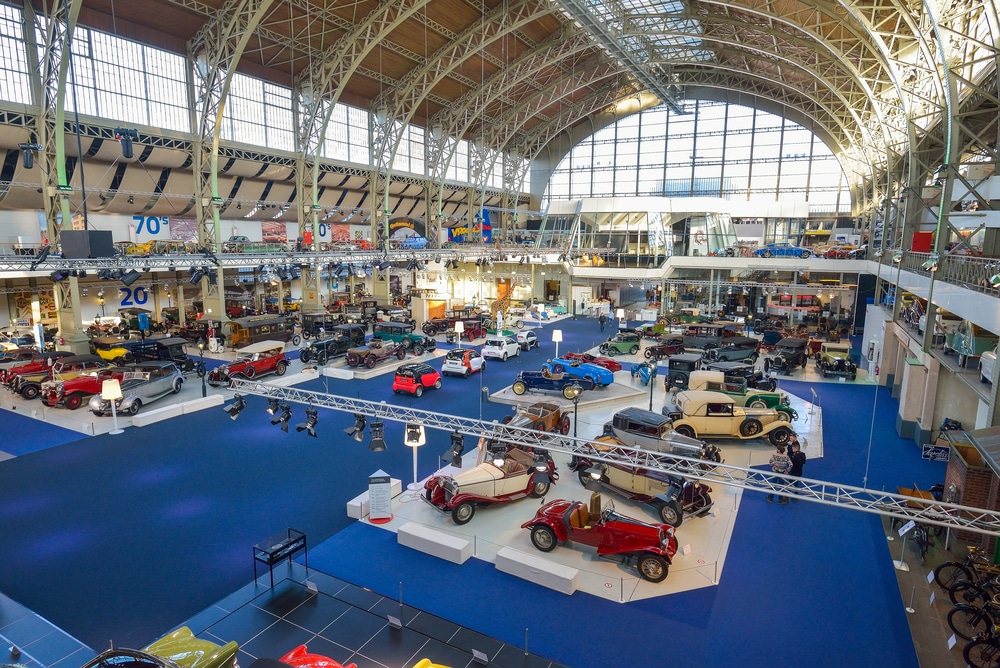 Source: Cristian Puscasu / shutterstock
Source: Cristian Puscasu / shutterstockIn the first decades of the 20th century South Hall at Parc du Cinquantenaire was repeatedly used for automotive exhibitions.
That tradition was revived in 1986 when it became the permanent home of a big chunk of the industrialist Ghislain Mahy’s glittering classic car collection.
Think of Autoworld as a complete survey of the history of the automobile, from 1896 to 1960, but also giving a stage to racing cars and bizarre and seldom seen concepts.
There are over 300 vintage, antique and classic cars in chronological order, representing more than 150 different brands.
Stepping through this sumptuous hall you’ll also see horse-drawn carriages and a retrospective of two-wheelers.
There’s a special educational room on mechanics and a mini-track for kids up to the age of seven.
Website: https://www.autoworld.be/
23. Royal Museum of the Armed Forces and Military History
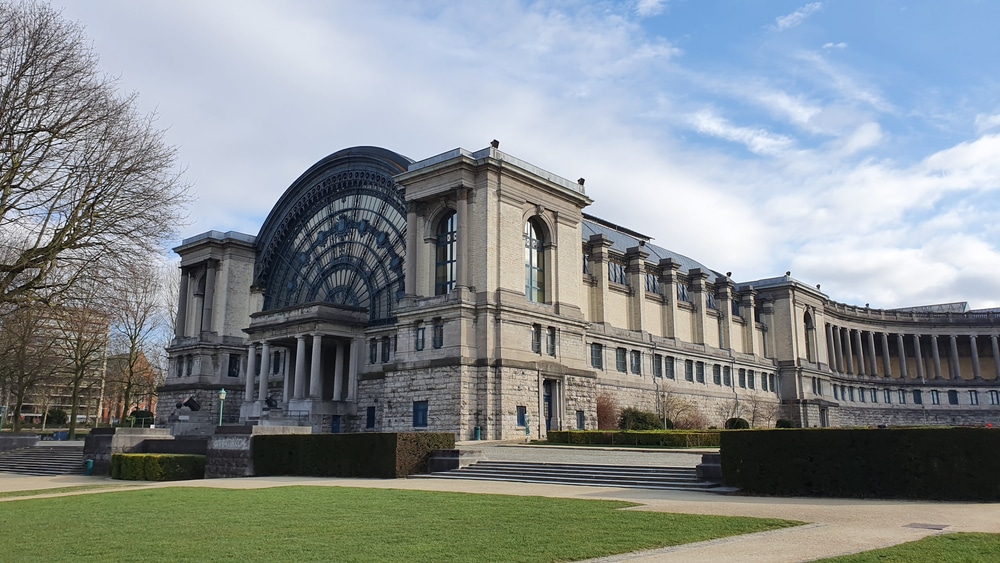 Source: marcotups / shutterstock
Source: marcotups / shutterstockThe military museum in the two northernmost halls in Cinquantenaire’s extraordinary exhibition complex has its roots in a display at the Brussels International Exposition of 1910. The museum’s giant cache of weapons and equipment first came together after the Great War, when an officer assembled a collection of items abandoned by the Germans.
This was expanded over time to become what is billed as the largest and most diverse recollection of this conflict.
The Arms and Armour gallery presents edged weapons and plate armour from Medieval times to the late-18th century.
Another showstopper is the Aviation Hall, where modern and historic aircraft sit beneath the vaulting metal and glass roof of Gédéon Bordiau’s magnificent north wing.
Website: https://www.klm-mra.be/
24. BOZAR (Centre for Fine Arts)
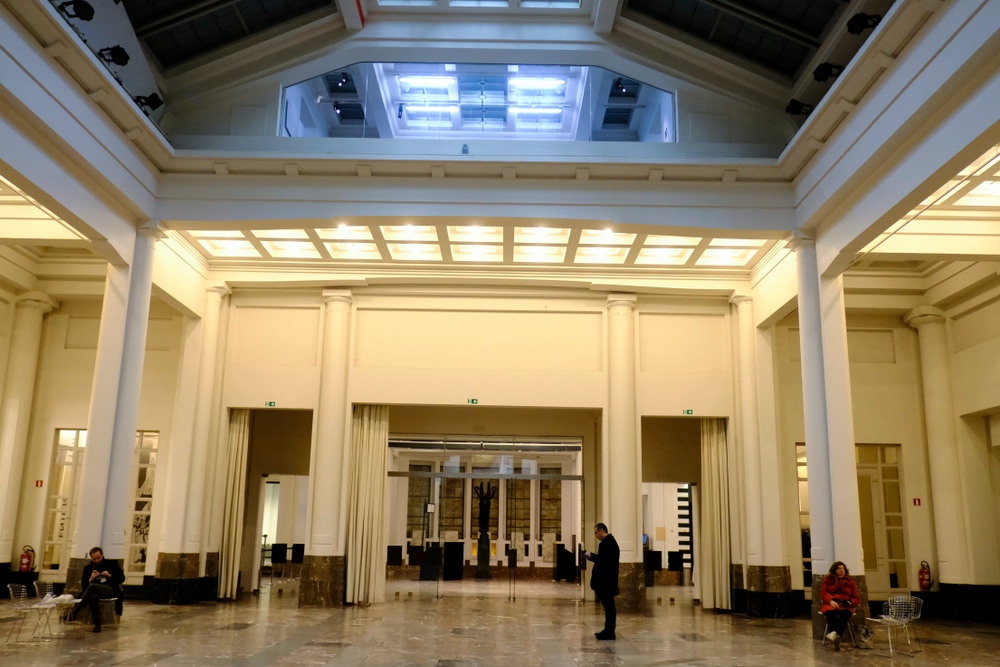 Source: Alexandros Michailidis / shutterstock
Source: Alexandros Michailidis / shutterstockVictor Horta had moved onto Art Deco by the time he designed this stunning cultural venue at the heart of the Mont des Arts.
The largest space at BOZAR (1929) is the Henry Le Bœuf Hall, with a capacity for 2,200 and the seat of the National Orchestra of Belgium.
Added to that are four other performance halls and a warren of exhibition rooms.
On the menu are performances, conventions and exhibitions for music, theatre, dance, literature, architecture and cinema.
There are around ten major exhibitions for visual arts each year, and previous subjects have been as diverse as Frida Kahlo, Gilbert & George and Flemish Masters.
Website: https://www.bozar.be/
25. Le Botanique
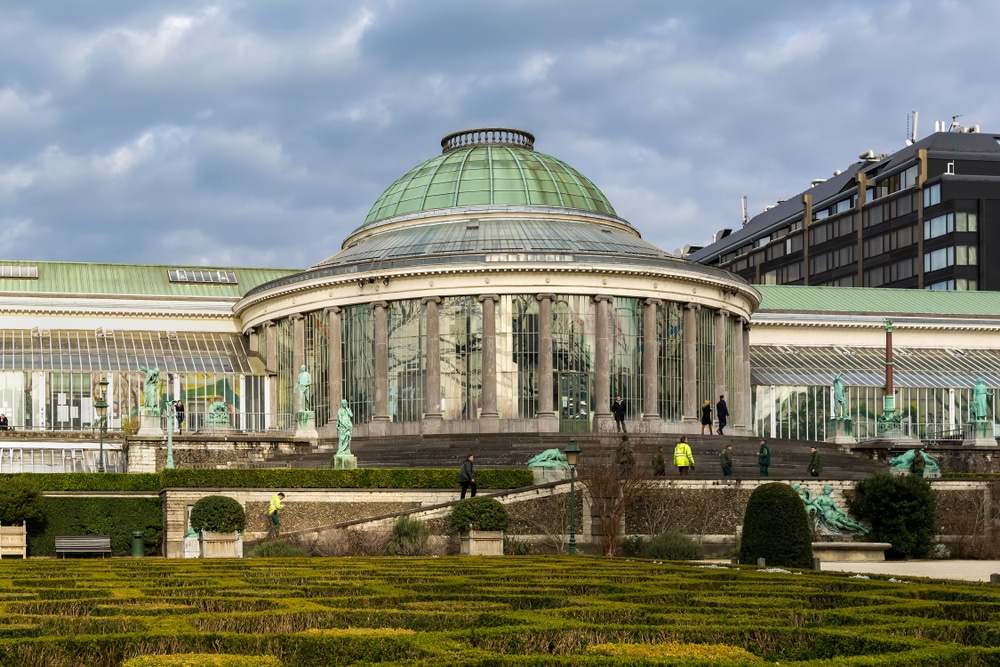 Source: Artography / shutterstock
Source: Artography / shutterstockThe National Botanical Garden of Belgium moved out of the city in the 1950s, and in 1984 the handsome former complex was repurposed as a cultural centre for the French Community of Belgium.
The metal and glass architecture at Le Botanique harks back to the 1870s when it was envisioned as a Belgian answer to Kew.
There are eight spaces, staging an exciting program of exhibitions for photography and contemporary art, as well as live music, cinema, theatre and dance.
Major exhibitions take place in the sumptuous Museum, which can also be converted into a salon for intimate concerts.
The other evocative venues are the Orangery with a capacity of 650, and the Rotunda, holding 250.
Website: https://botanique.be/